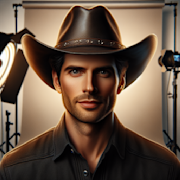Laura (1944)

In the world of classic film noir, “Laura” stands out as a timeless masterpiece. Directed by Otto Preminger and based on the novel by Vera Caspary, this 1944 film has captivated audiences for decades with its gripping storyline, complex characters, and stunning visuals. Let’s take a closer look at why “Laura” continues to be a beloved classic in the history of cinema.
The Plot
“Laura” tells the story of a detective named Mark McPherson who is assigned to investigate the murder of a beautiful young woman named Laura Hunt. As he delves deeper into the case, McPherson becomes obsessed with Laura, despite never having met her in person. As he interviews the suspects, including Laura’s fiancé, her wealthy aunt, and a charming playboy, McPherson uncovers a web of lies, deception, and betrayal that keeps the audience guessing until the very end.
The Characters
One of the key strengths of “Laura” lies in its well-developed and multi-dimensional characters. Laura Hunt, played by the talented Gene Tierney, is not just a beautiful face but a complex and intriguing woman with a dark past. Detective Mark McPherson, portrayed by Dana Andrews, is a tough and cynical investigator who is surprisingly vulnerable when it comes to Laura. The supporting cast, including Clifton Webb as the acid-tongued columnist Waldo Lydecker, and Vincent Price as the charming playboy Shelby Carpenter, add layers of depth and complexity to the story.
The Visuals
Visually stunning and meticulously crafted, “Laura” is a feast for the eyes. The film noir aesthetic is on full display, with shadowy cinematography, stark lighting, and moody atmosphere creating a sense of foreboding and mystery. The art direction and set design, particularly in Laura’s luxurious apartment and Waldo Lydecker’s lavish home, evoke a sense of glamour and sophistication that is both alluring and menacing.
The Legacy
Since its release in 1944, “Laura” has been hailed as a classic of the film noir genre and has inspired countless filmmakers and storytellers. Its haunting score, composed by David Raksin, has become iconic in its own right, with the theme song “Laura” becoming a jazz standard. The film’s influence can be seen in works ranging from Alfred Hitchcock’s “Vertigo” to David Lynch’s “Twin Peaks,” showcasing its enduring impact on popular culture.
Conclusion
In conclusion, “Laura” remains a timeless classic that continues to captivate audiences with its gripping storyline, memorable characters, and stunning visuals. Its status as a masterpiece of film noir is well-deserved, and it stands as a testament to the enduring power of storytelling and filmmaking. Whether you’re a fan of classic cinema or a newcomer to the world of film noir, “Laura” is a must-see for any lover of great cinema.

Alberto Miller
Movie Fanatic
More From Classics Authority Movies

Movie
Beyond the Spotlight: Unsung Heroes of Classic Movie Production

Movie
Taxi Driver (1976)

Movie
Psycho (1960)

Movie
The Magical Realism of Classic Fantasy Films

Movie
The Art of Projection: The Evolution of Movie Theaters and Cinemas

Movie
The Usual Suspects (1995)





